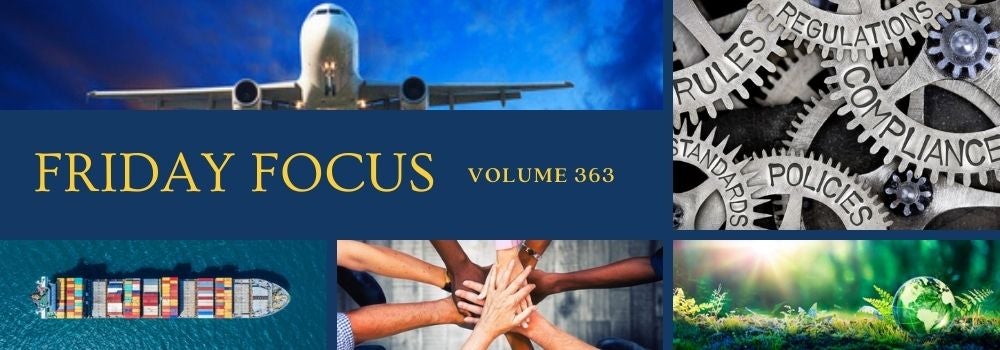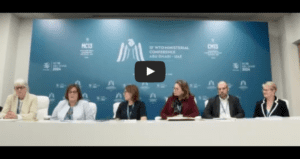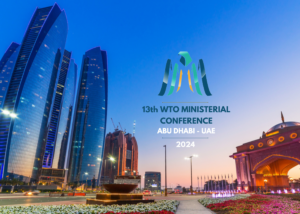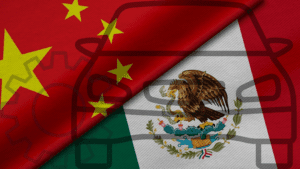|
On February 27 and February 29, WITA hosted briefings by U.S. industry representatives live from the World Trade Organization’s Thirteenth Ministerial Conference in Abu Dhabi.
On March 4, WITA will host a follow-up webinar to debrief on key outcomes of the Ministerial and share insights into what went on in the negotiations and behind the scenes in Abu Dhabi. Information and registration can be found here and below.
Featured Speakers:
Christine Bliss, President, Coalition of Services Industries (CSI)
Ed Brzytwa, Vice President of International Trade, Consumer Technology Association
Kyle Johnson, Director of Trade Policy, Information Technology Industry Council
Sharon Bomer Lauritsen, Principal and Founder, AgTrade Strategies
Lisa Schroeter, Global Director of Trade & Investment Policy, Dow
Tiffany Smith, Vice President, Global Trade Policy, National Foreign Trade Council
Moderator: Penny Naas, TradeExperettes
|
02/27/2024 & 02/29/2024| Washington International Trade Association |
Future-Proofing the World Trade Organization
|
The following is an excerpt from Penny Naas’ blog post: “Future-Proofing the World Trade Organization” published by the Atlantic Council. Ministers have gathered to discuss a series of critical issues including environmental issues like fisheries and climate change; digital trade; investment facilitation; and new negotiations on agriculture and industrial policies. In addition, the WTO is adding two new members, Timor-Leste, and Comoros, demonstrating that countries continue to see value in joining the WTO. Yet within the WTO, members disagree on the form and prioritization of potential agreements—with more advanced economies pushing for forward-leaning issues like digital and climate change negotiated with a subset of members, while less developed countries push for work on issues such as food security as well as special and differential treatment. As the WTO rules require unanimous approval, countries’ willingness to use their veto power as a bargaining tool creates complex negotiations. Ministers must advance their country’s and citizens’ priorities, but increasingly narrow, nationalistic policies such as tariffs, export restrictions, import bans, and discriminatory non-tariff barriers make finding middle ground and compromise in negotiations more challenging than in the past. At MC13, the WTO’s consensus driven process will require ministers to find a balance in addressing these divergent but connected issues and finding common ground where possible. While the substantive issues are important, the most critical issues ministers must address are the structural deficiencies that undermine the future health and functioning of the WTO. The WTO has undertaken many reforms since MC12, with improvements implemented via changes in the WTO’s typical practices. However, critical areas remain unresolved within the four primary areas of work within the WTO: (1) negotiations, (2) technical assistance, (3) reviews, and (4) dispute settlement. Currently, both the negotiation and dispute settlement functions are broken and not working to their full potential. Before tackling additional issues, the WTO members must first make the WTO functional and fit for purpose. |
|
Can Trade Intervention Lead to Freer Trade?
The global trading system has been broken for decades. A well-functioning trading regime would permit neither the large, persistent trade imbalances that characterize the current global trading system nor the perverse flow of capital from developing economies to advanced economies. The system needs new rules that encourage a return to the benefits of free trade and comparative advantage.
Until this happens, trade imbalances will persist. This matters especially to the United States because of the role it plays in anchoring global imbalances. Countries that run large, persistent trade surpluses must acquire foreign assets to balance these surpluses. American assets are particularly attractive for this purpose, and the United States allows nearly unfettered access to these assets. As a result, surplus countries prefer to acquire assets in the United States in exchange for their surpluses, which also means that the United States must run the corresponding trade deficits.
This has important implications for U.S. manufacturing, unemployment, and debt. It means that the U.S. share of global manufacturing must decline while that of surplus countries must rise. Because surplus countries are those that subsidize their manufacturing at the expense of domestic consumption, American manufactures are forced indirectly to subsidize U.S. consumption. This is why, during the past five decades, manufacturing has consistently migrated from deficit countries (mainly the United States) to surplus countries (mainly China). Until global rebalances are resolved, this will continue.
It also means that for all the talk of reshoring and friendshoring, the U.S. trade deficits cannot decline as long as surplus economies can continue to acquire assets in the United States with the proceeds of their surpluses. The United States, in other words, has no choice but to run deficits to balance the surpluses of the rest of the world.
|
On a Collision Course: China’s Existential Threat to America’s Auto Industry and its Route Through Mexico
On March 13, WITA and the Asia Society Policy Institute will host a free webinar titled “What’s Driving Chinese Investment into the Mexican Automotive Sector?” Scott Paul, one of the authors of this report, will take part in the webinar. Information can be found here and below.
The U.S. auto sector accounts for 3% of America’s GDP. It is annually responsible for tens of billions of dollars of annual research and development spending. It supports an entire ecosystem of manufacturers, from steelmaking to semiconductor fabrication. And for nearly a century, it has provided reliable, well-compensated employment for millions of American workers of various levels of educational attainment, making it a pillar of the American middle class. As such, the U.S. auto industry’s health has been the years-long focus of U.S. trade policy, and a more recent focus of U.S. industrial policy. This includes longstanding tariffs on imported light trucks, and more recent rules of origin (ROO) content requirements for vehicle imports from Mexico and Canada, as well as clean vehicle consumer tax credits that reward domestic production as U.S. automakers undertake an industry-wide pivot to the manufacture of EVs.
The U.S. auto sector and its extensive domestic supply chain, however, face a growing threat from Chinese competitors, buoyed by the Chinese state. While direct imports of Made in China automobiles have until now been extremely limited, China’s auto sector is hardly the uncompetitive laggard of decades past. Thanks to the Chinese Communist Party’s (CCP) industrial planning and generous assistance that began in the wake of the 2009 financial crisis, its state-owned and state-supported manufacturers are poised to dominate the burgeoning global EV market. China is estimated to have spent tens of billions of dollars to create an auto sector ready to take advantage of the clean energy shift, with support including tax breaks, favorable lines of credit, land use agreements, extremely limited import competition, and often direct subsidization. Chinese automakers have also benefited from mandatory joint ventures with and forced technology transfers from foreign firms seeking to gain access to the vast Chinese auto market. And, most egregiously, they benefit from the use of forced labor in their supply chains.
The state support has paid off. The Chinese auto industry’s growth has been exponential. The country became the world’s leading auto exporter in 2023, selling cars in Europe, Australia, Africa, Mexico and Southeast Asia, and Chinese automakers lead the world in EV production and sales by wide margins. China’s technological lead and its extensive supply chains, particularly for critical battery raw materials and components, are deep and secure because of its defined and deliberate industrial policies. Beijing has prioritized reducing dependencies on other countries, which in turn makes the world increasingly dependent on its own supply chains.
|
|
|
|






